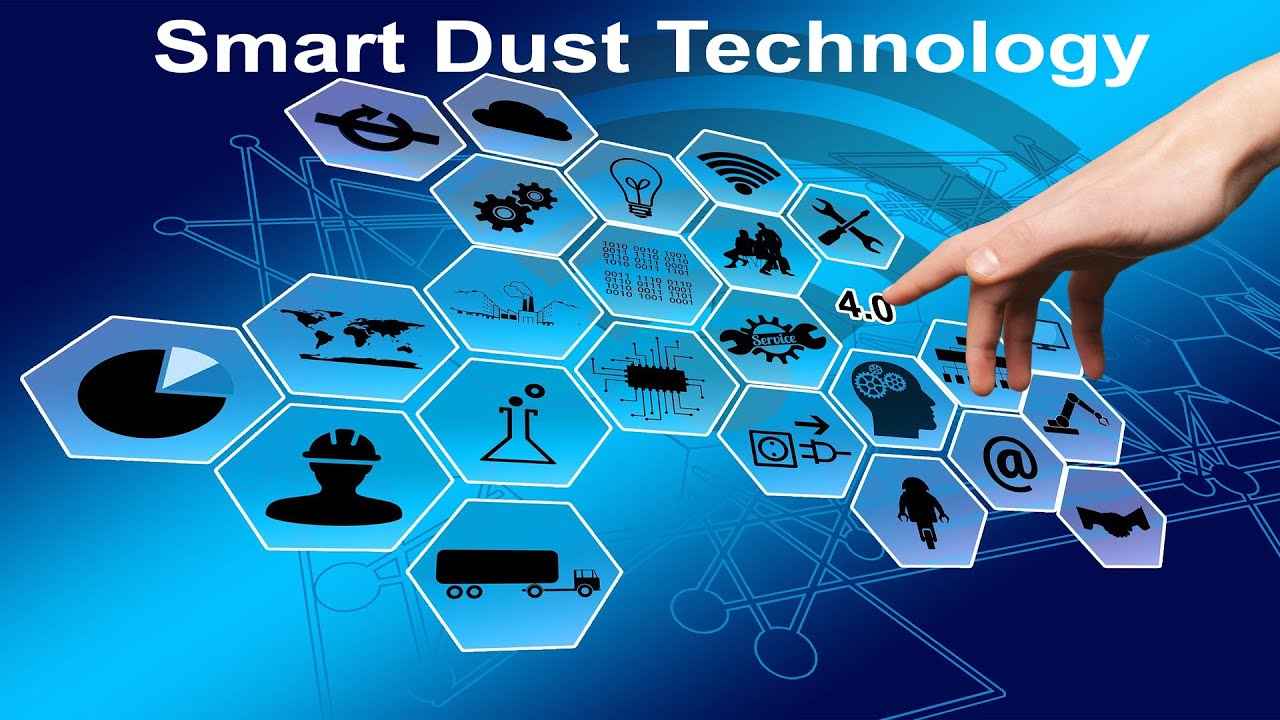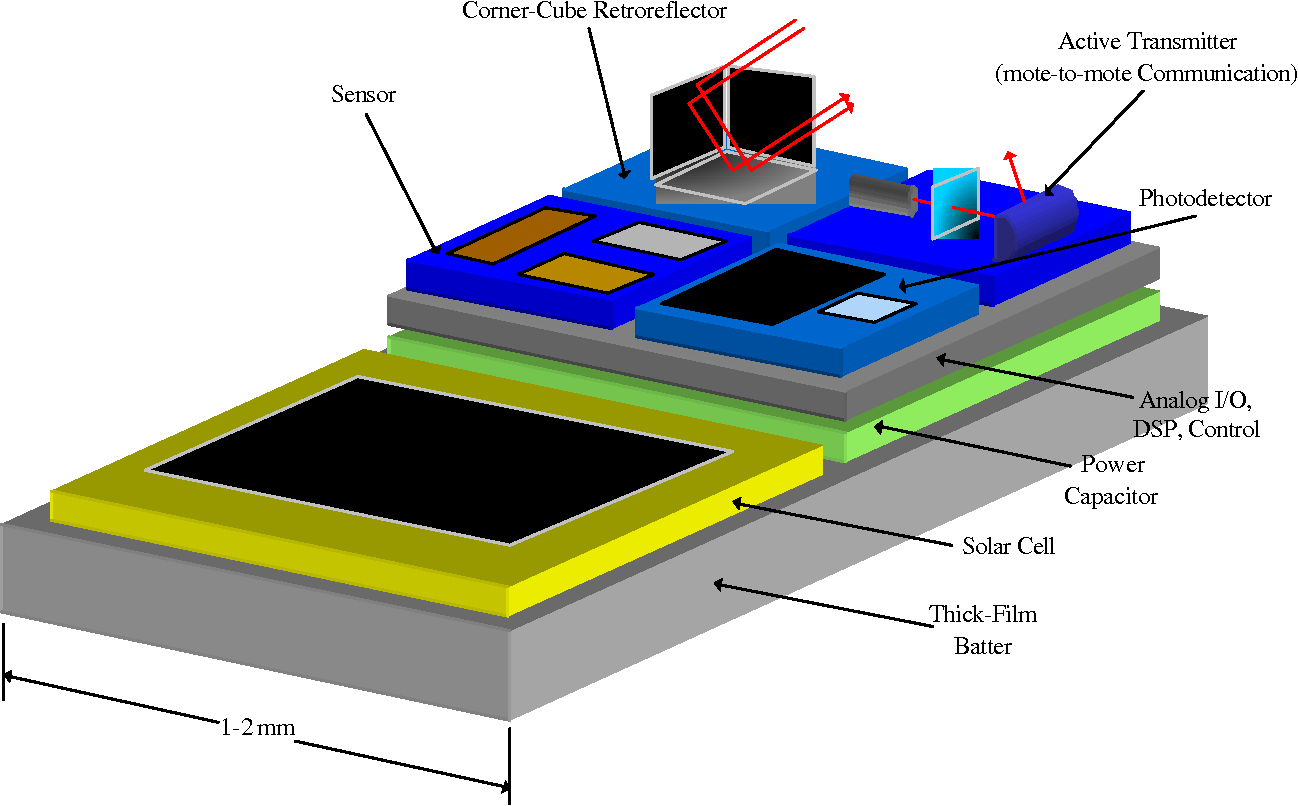The Smart Dust Technology and Its Transformative Potential
Smart Dust refers to tiny, wireless microelectromechanical systems (MEMS) equipped with sensors, processors, and communication capabilities. These minuscule devices, often resembling grains of dust, can autonomously collect and transmit data from their surroundings. The integration of sensing, computing, and communication functionalities within these miniature particles opens up a realm of possibilities for monitoring and interacting with our environment in unprecedented ways.
This article discusses the intricacies of Smart Dust, exploring its components, applications, challenges, and the potential it holds for shaping the future.
Origin of Smart Dust
The origin of Smart Dust can be traced back to the late 1990s, stemming from research conducted by the University of California, Berkeley. Initially conceived for military applications, the concept has since evolved, finding its way into a myriad of civilian applications, revolutionizing industries beyond its initial scope. Smart Dust is among the most trending technologies.

Components of Smart Dust
The core components of Smart Dust encompass a trifecta of functionalities:
1. Sensors
Smart Dust sensors are designed to capture various types of data, depending on the intended application. These sensors can measure environmental parameters, detect pollutants, monitor health metrics, and more.
2. Processors
Embedded processors within Smart Dust devices analyze the data collected by sensors, enabling on-the-fly computation. These processors play a crucial role in extracting meaningful information and optimizing data transmission.
3. Communication Capabilities
Equipped with wireless communication capabilities, Smart Dust devices can transmit data to remote receivers or other nearby particles. This facilitates real-time monitoring and data sharing, forming a network of interconnected devices.

Workability of Smart Dust
The workability of Smart Dust revolves around its seamless integration into diverse environments and its ability to function autonomously. Here's a breakdown of its workability:
1. Autonomous Operation
Smart Dust operates autonomously, requiring minimal external intervention. Once deployed, these devices can perform their designated tasks without continuous human oversight.
2. Environmental Interaction
The ability of Smart Dust to interact with its environment in real-time sets it apart. Whether monitoring air quality, tracking health metrics, or assessing structural integrity, these devices respond dynamically to the conditions they are designed to analyze.
3. Networking Capabilities
Smart Dust devices can form networks, communicating with each other to enhance their collective capabilities. This networking aspect enables collaborative data collection and extends the range and efficiency of their applications.
Applications Across Industries
1. Environmental Monitoring
Smart Dust proves invaluable in environmental science, enabling real-time monitoring of air and water quality, pollution levels, and climate parameters. Deployed in large numbers, these dust-sized sensors offer a granular view of environmental conditions, facilitating more effective conservation efforts.
2. Healthcare Innovations
In the realm of healthcare, Smart Dust presents opportunities for revolutionary diagnostics and monitoring. These tiny sensors could be ingested or implanted to provide continuous health data, offering early detection of diseases and personalized treatment plans.
3. Infrastructure Management
Smart Dust plays a pivotal role in infrastructure maintenance. Deployed within structures, bridges, and machinery, these devices can detect structural weaknesses, monitor wear and tear, and predict maintenance needs, contributing to enhanced safety and efficiency.
4. Precision Agriculture
In agriculture, Smart Dust contributes to precision farming by providing real-time data on soil conditions, crop health, and environmental factors. This enables farmers to optimize resource usage, improve crop yields, and implement sustainable practices.
5. Security and Surveillance
The use of Smart Dust in security and surveillance enhances situational awareness. These devices can be discreetly dispersed in areas of interest, providing comprehensive monitoring without the need for conspicuous cameras or sensors.
Challenges and Considerations
While the potential applications of Smart Dust are vast, several challenges and considerations must be addressed:
1. Power Consumption
Ensuring a long operational life for Smart Dust devices requires addressing power consumption issues. Research is ongoing to develop efficient energy-harvesting mechanisms and low-power components.
2. Privacy Concerns
The widespread deployment of Smart Dust raises concerns about privacy. Striking a balance between data collection for beneficial purposes and safeguarding individual privacy is a critical consideration in the development and implementation of Smart Dust technology.
3. Interoperability and Standardization
The integration of Smart Dust into various industries necessitates standardized protocols and interoperability. Establishing common standards is crucial for seamless communication and data exchange between diverse systems.
Future Outlook
As technology continues to advance, Smart Dust holds the potential to redefine how we interact with and understand the world. Ongoing research and development efforts aim to address current challenges, paving the way for widespread adoption and integration into diverse sectors.
Conclusion
Smart Dust stands at the forefront of technological innovation, offering a glimpse into a future where our surroundings are seamlessly interconnected and monitored at a microscopic level. While challenges persist, the potential benefits across environmental, healthcare, agricultural, and security domains underscore the transformative impact Smart Dust could have on our daily lives. As research progresses and solutions are refined, Smart Dust may very well become a ubiquitous force, shaping the next chapter in the evolution of technology.
You might want to explore the beauty of cultural diversity and enrich your understanding of the world! Learning about different cultures is an enriching journey that broadens our perspectives, fosters empathy, and fosters respect for one another. It allows us to appreciate the unique traditions, values, and customs that shape the identity of various communities around the globe. Learn about the afar people, the garifuna, the san, the dogon, the maasai of kenya, the Hamer Tribe, the Hadza Tribe, the Sami, the Akha People, the Aymaraes, the Kazakh People and the Adivasi on AmplifyGlobe.